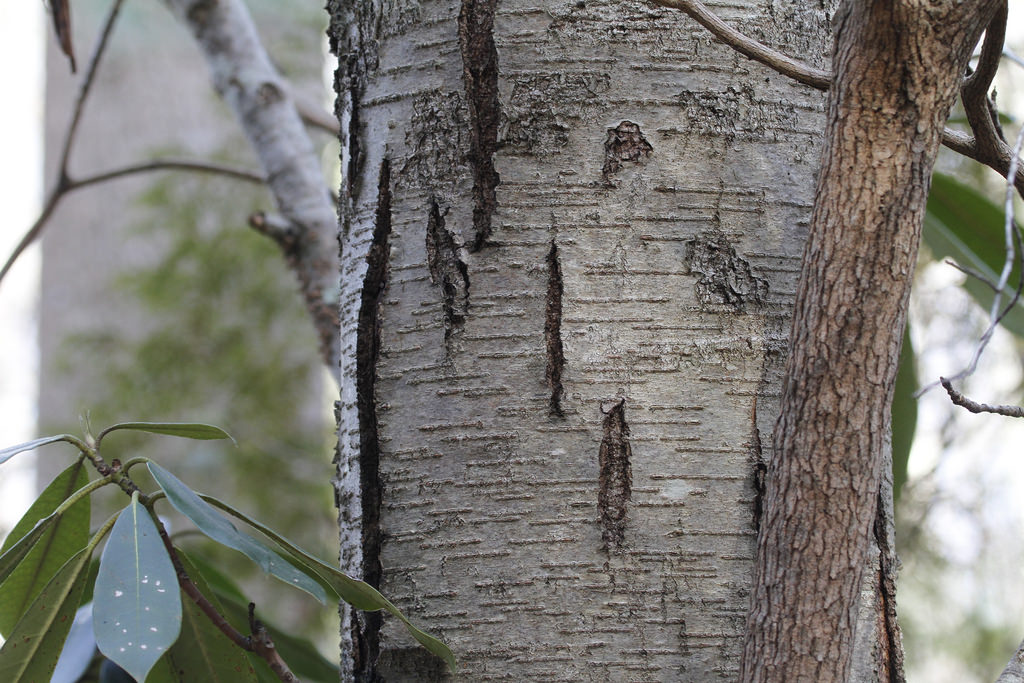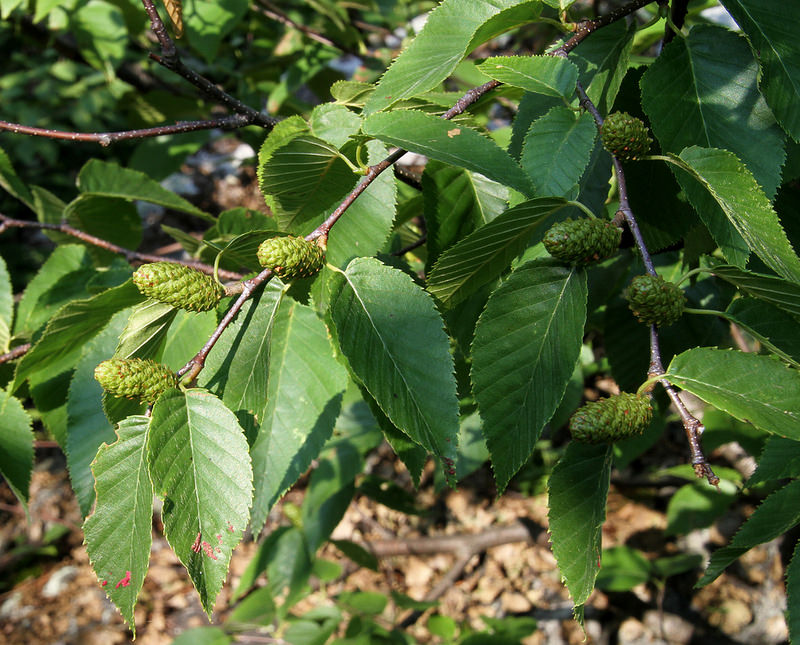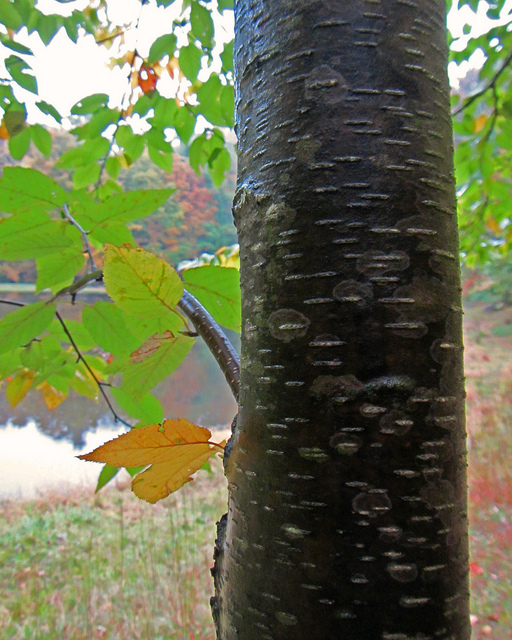Sweet Birch
(Betula lenta L.)
Description
Betula lenta (family Betulaceae) is a unique type of tree that gives off a sweet aroma. This northern hardwood tree grows between 70-80 ft tall, with a trunk diameter between 24-60 in. Scratched twigs have a characteristic wintergreen odor. Young bark is smooth with a deep brown-purple coloration with conspicuous lenticels. Older bark turns gray. The tree’s wood has unique properties that when exposed to air the wood’s color darkens to a reddish/brown¹. The leaves are simple with double toothed edges, are alternate along the stem, grow up to 2-6 in., are ovate, and are light green in color. Sweet birch is monoecious with male and female catkins on the same plant¹. Catkins grow up to 0.75 in length but do not open until the following spring¹. Reproduction only occurs when the tree is about 40 years old. The 2-3 mm seeds are dispersed by wind ².
Sweet birch bark. @ M. Tillett, 2012*. Maryland Plant Atlas4

Sweet birch mature bark. @ B. Hubick*, 2015, Maryland Plant Atlas4

Male catkins of sweet birch. @ D. Mullen (CC BY-NC-ND 2.0), 2018, North Carolina Extension7

Sweet birch leaves and female catkins. @ J. Stasz* 2014, Maryland Plant Atlas4
Distribution
Sweet birch can be found along the east coast from Georgia to Quebec but in abundance in the Northeast. To the south it is restricted to the mountains¹. Birch trees grow in all types of soils from wet to rocky/dry soil but favor more moist, well-drained soils. Because of the wide tolerance of soil, this tree grows easily on rocky environments with an optimal altitude between 2,000 and 4,500 feet¹. In Maryland the greatest abundance of Benta lenta is in Garrett County, but it occurs across the northern counties of the state 4. It needs a lot of sunlight to grow so it cannot develop in already established forests.

Native range of sweet birch8
Wildlife Importance
Birch trees are very useful in replacing dying trees because of their rapid growth, as a result it will be able to transform the ecosystem back to forest rapidly. Another byproduct of this growth is that it’s able to put more nitrogen back into the soil compared to other trees. Its leaves help feed the soil and many insects in the forest 6. The caterpillar of Morning Cloak and Dreamy Duskywing butterflies utilize sweet birch 7. Many birds eat the seed7.
Economic Importance
Sweet birch wood is grown right besides yellow birch because of all the similarities they share but yellow birch is preferred because it is lighter. Betula lenta is still used in many of our wood products like cabinets, flush doors, furniture, and paper pulp. Another product that used to be collected was the oil within the birch bark, the oil was used for wintergreen oil but then soon replaced by synthetic products ².
Threats
Sweet Birch are resistant to all weather condition and because of this it can survive subzero temperatures with minimal damage¹ and can even survive a drought compared to other trees in the area. But this tree is not truly invincible. Fungi and pathogens invade and cause stems to become defective ¹. One example is Nectria Canker, it uses these defective stems to their advantage and grow within the plant. Once the fungi have settled, it attacks the bark and keeps on growing until the stem or branch does not have any more nutrients and dies, young tree are more susceptible to this compared to older tree that have already built defense to fight off the fungi¹.
Interesting Facts
- It gets its name from the aroma its twigs make and also from its tough and flexible stems ¹.
- It has other names like cheery birch and black birch¹.
- It used to be used for wintergreen oil 7.
- The sap can be used to make syrup and can be brewed into beer7.
- It used to be used to replace mahogany wood because of its different color exposed to oxygen.
References
- Silvics of North America, Hardwoods, Volume 2: Betula lenta
- Leak, W. B. Silvical characteristics of sweet birch
- The Morton Arboretum: Sweet birch
- Maryland Plant Atlas: Betula lenta
- Ignace, D. D., et al. 2018. Decline of a foundation tree species due to invasive insects will trigger net release of soil organic carbon. Ecosphere 9(8):1-13.
- Castro, M. S., et al. 2007. Symptoms of nitrogen saturation in an aggrading forested watershed in western Maryland. Biogeochemistry 84: 333-348
- North Carolina State Extension: Betula lenta
- Wikimedia: Betula lenta range map
* Imaged used with permission of photographer.

